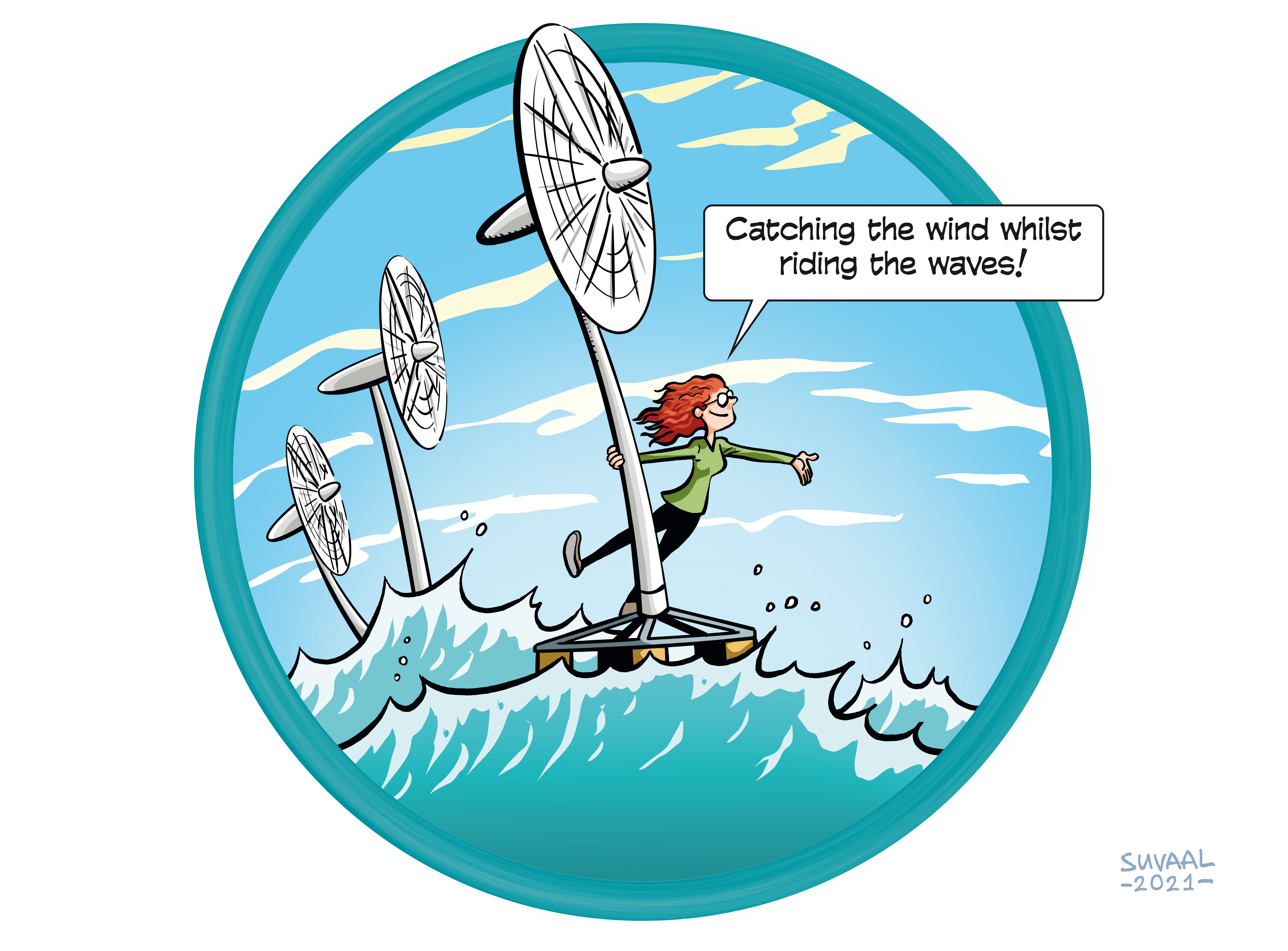Floating Wind Energy
Research Themes: Energy, Aerospace, Water & maritime


A TRL is a measure to indicate the matureness of a developing technology. When an innovative idea is discovered it is often not directly suitable for application. Usually such novel idea is subjected to further experimentation, testing and prototyping before it can be implemented. The image below shows how to read TRL’s to categorise the innovative ideas.
Summary of the project
The idea of floating wind is that you put a wind turbine on a floating support structure so it can capture wind energy. The advantage is that you can install wind turbines almost everywhere in the ocean which opens up new markets for harvesting this resource. However, as the turbine is no longer fixed to the sea floor its behaviour is quite different due to the influence of wind and waves. With high fidelity modelling the lead researcher and her team are looking at all the conditions that need to be taken into account for building these floating turbines – the type of turbine and floater, and the environmental conditions. Through this way of modelling she can test the assumptions of the engineering model before a physical model is built to be put to the test.
What's next?
Since the research is mostly model-based the next step is to build experimental facilities where the models can be physically tested. Parts of the facilities you would need to test floating wind are already on campus but there is need for smart way of connecting these. For instance, in the wind tunnel you would need a hexapod that moves mimicking the floating behaviour of the turbines.
Another next step is joining the floating wind research with research on producing hydrogen far offshore so you don’t have to transport the electricity over huge distances.
Contribution to the Energy transition?
There is a huge need for suitable locations to install wind turbines. Wind at sea is one of the preferred options for capturing wind energy compared to wind at land. The current wind farms at sea are fixed to the sea floor and hence installed in shallow seas. More space is available in deeper waters which can be captured by using floating wind turbines instead.
Dr. Ir. Axelle Viré
Prof. dr. Dominic von Terzi
Dr. ir. Delphine De Tavernier
Prof. dr. ir. Jan-Willem van Wingerden
Dr. ir. Michiel Zaaijer
Prof. dr. Andrei Metrikine
Faculties involved
- AE
- 3ME
- CEG
